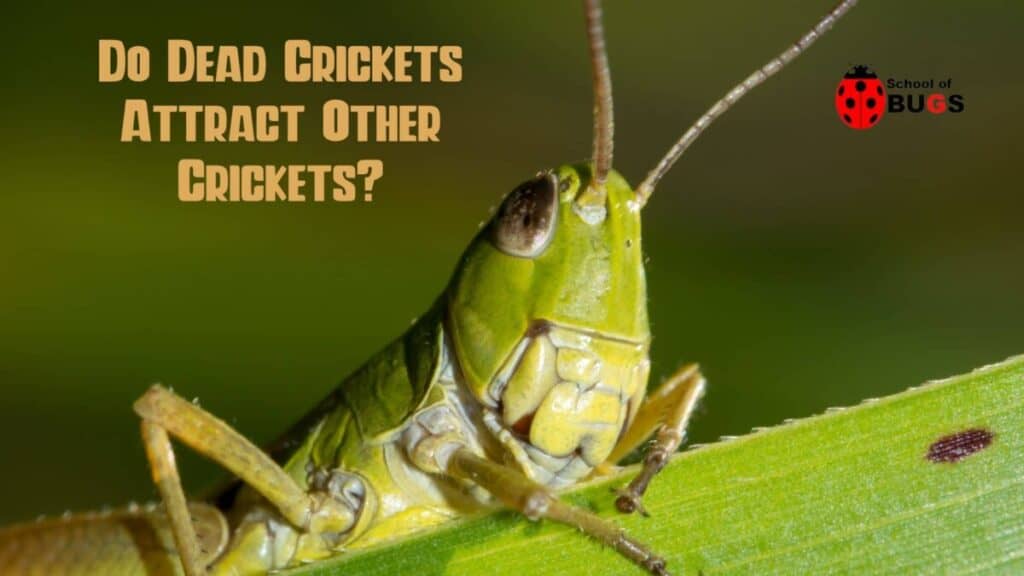
There’s nothing more aggravating than having cricket in your wall or somewhere in your house that you can’t access.
You would think a dead cricket would be a good thing. While one dead cricket in your wall may not matter much, a bunch of dead crickets in your yard will.
Dead crickets don’t attract other crickets into the area. However, they do attract all of the things you don’t want wreaking havoc in your yard, like birds, rats, mice, and other small animals—mostly of the rodent variety.
A dead cricket is a high source of protein for something like a mouse or a rat. Birds aren’t such a big deal unless you have a lot of dead crickets in your yard pulling in a lot of birds.
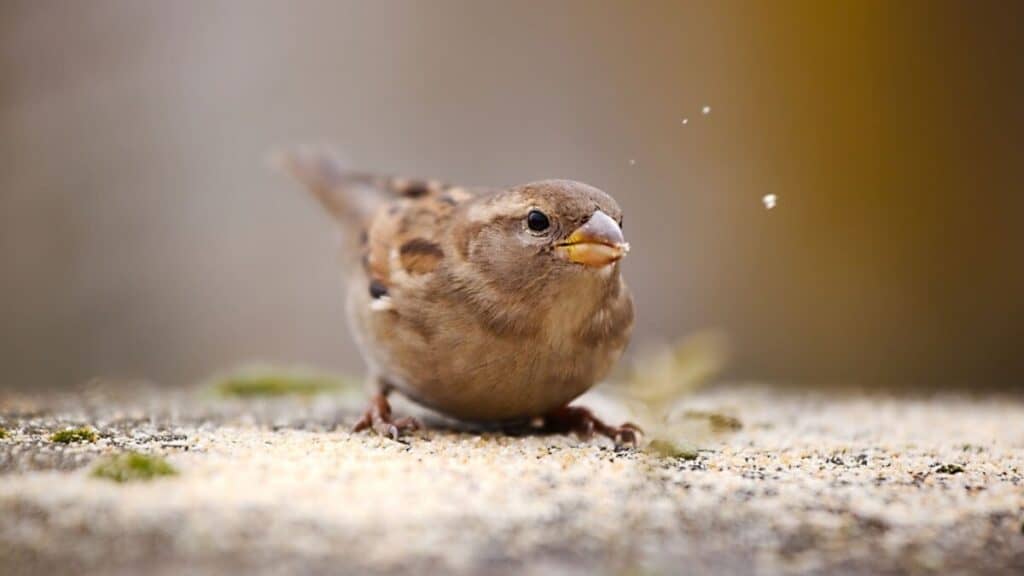
Plus, a lot of dead crickets smell bad. Not like a rotting animal but bad nonetheless.
What Attracts Crickets?
Dead crickets don’t really attract hordes of new, living crickets. But crickets are attracted to your home for a variety of reasons. Those reasons are the same reasons most critters are attracted to your front doorstep.
1. Water
Water is the one thing that everything on the planet needs to survive. If crickets can find a source of unlimited water supply, they will go to it and stay there until the water source is removed.

This is especially true if you’re area is going through a drought or just a long time without any water. Crickets get pretty desperate for water at that point and if there is anything near your home that is an accessible water supply, crickets will go there.
If it hasn’t rained for a while and you have an outdoor pool, this would be a good time to go outside and cover it up.
2. Lights Inside and Outside the Home
Scientists have worked on solving this question for decades: why are bugs attracted to lights? Crickets are mostly nocturnal insects and there are a number of theories as to why they are attracted to light. For that matter, why are any bugs attracted to light?
It’s called “phototaxis.” There are two types—positively phototactic and negatively phototactic. Positive means they are attracted to the light and negative phototactic insects will flee from the light. That’s why cockroaches scurry away when you shine a light on them.
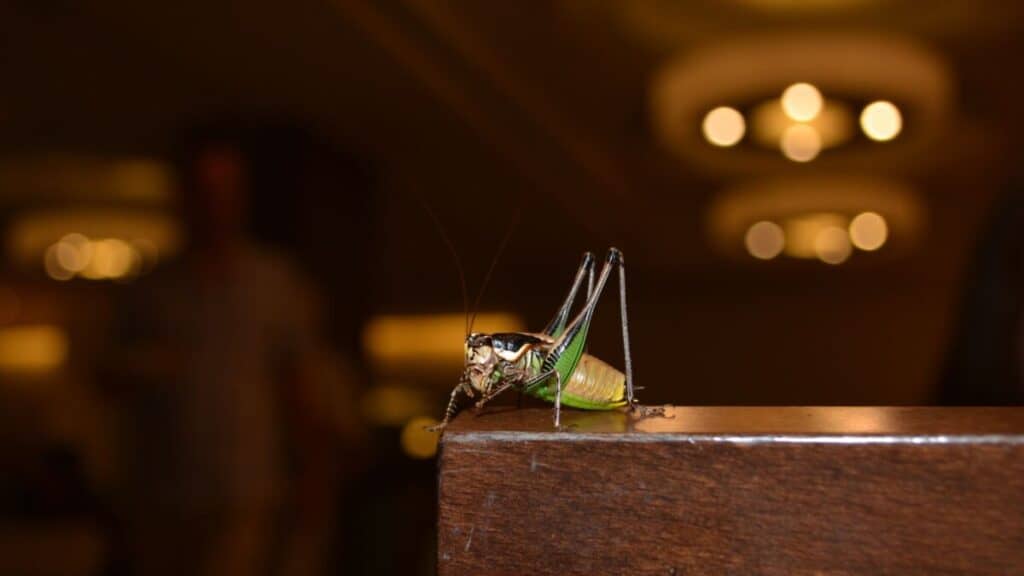
Crickets, however, are positively phototactic but not to the extreme as some of the bugs that immediately begin swarming around your exterior lights at night.
Scientists aren’t really sure why crickets and other bugs are positively phototactic. It would seem counterintuitive to an insect’s instincts to survive.
3. Escaping Predators
What better place to go than a house to escape predators? Crickets are looking for a safe place to shelter where predators can no longer get to them.
Crickets are primarily nocturnal because coming out in the middle of the day is a certain death sentence.
4. Crickets are Attracted to Unclean Environments
Crickets are omnivores, which means they will eat both plants and meat. Regarding meat, it’s more in line with your garbage. Their primary goal is your kitchen since that’s where all the food is.
Most people have their garbage can near or in their kitchen, along with dirty dishes in the sink, unwiped countertops and kitchen tables, and unswept floors.
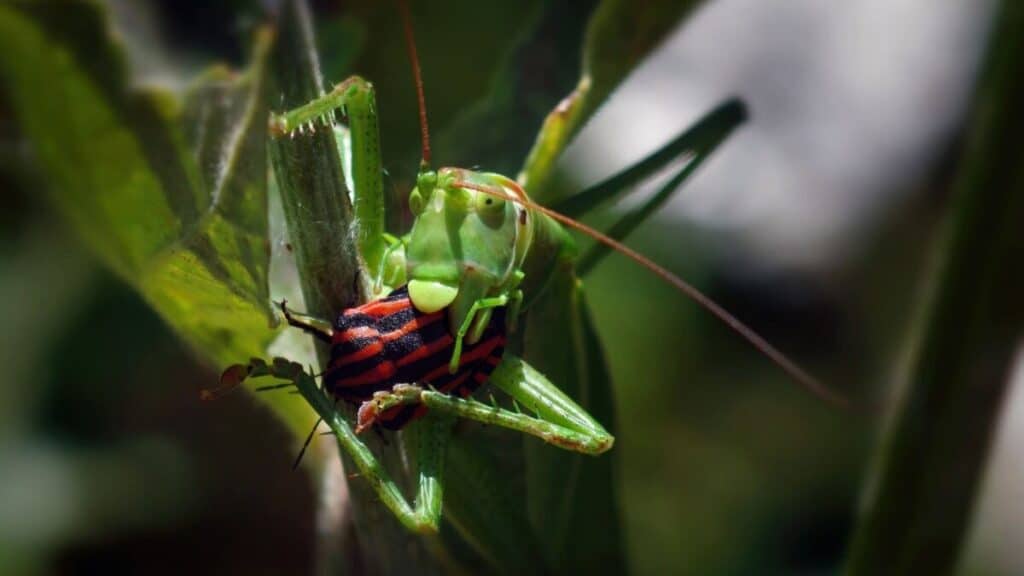
Crickets are more than happy to eat the decaying material from dirty silverware and plates.
The best way to avoid crickets in your kitchen is to simply keep your kitchen as clean as possible.
5. Heat
Crickets hate the cold. Eventually, the cold will kill them if they don’t reach somewhere warm as quickly as possible.
For crickets, like everything on this list, it’s all about survival and that means staying warm when the winter months arrive.

If you have a fireplace or a space heater, they will be drawn to it like a magnet, assuming they have a method of access into your home.
They also like ovens, microwaves, heating vents, or anything else that delivers heat in your home.
6. Dirty Laundry
Crickets are attracted to dirty laundry for many of the same reasons they are attracted to anything else in your house.
Piles of dirty laundry provide moisture, warmth, shelter, and the occasional snack if there is any underlying, decaying material in the laundry, such as a rag used to wipe crumbs off of the kitchen table.

It’s also an excellent place for crickets to lay their eggs. The dirty laundry provides all of the necessities they need to lay eggs and provides shelter for both themselves and their eggs. That is unless you routinely clean your dirty laundry so piles of it don’t sit in place for long.
It’s especially problematic when you have kids. Households with kids go through more laundry than is actually worn and it’s really easy to get way behind.
7. Crickets Love Carrots
Crickets absolutely love carrots. The vegetable provides them with many of the nutrients and vitamins crickets need to survive.

If you live in a rural area or are living off the grid, be careful how you grow and harvest carrots.
Even if you don’t grow them, purchasing from the store and laying them out on the counter is a green flag for crickets.
Whenever you peel the carrots, be sure to seal the peels up in the garbage so they’re inaccessible.
How to Get Rid of Crickets: Both Dead Crickets and Live Ones
If crickets get into any outdoor insecticides, they will probably die en masse. However, that’s only the beginning of your problems as their decaying bodies will attract all manner of critters to your yard and, potentially, in your home.
Of course, the problem is being able to see them. Crickets look like dead leaves and, in most cases, their bodies are much smaller than dead leaves. So how do you get rid of dead crickets when you can’t even see them?
You’re not going to have much luck if you try to get rid of them after rain because using a rake is the best way to go. If you know there are crickets (living) around, the odds are good that there are dead crickets in the yard.
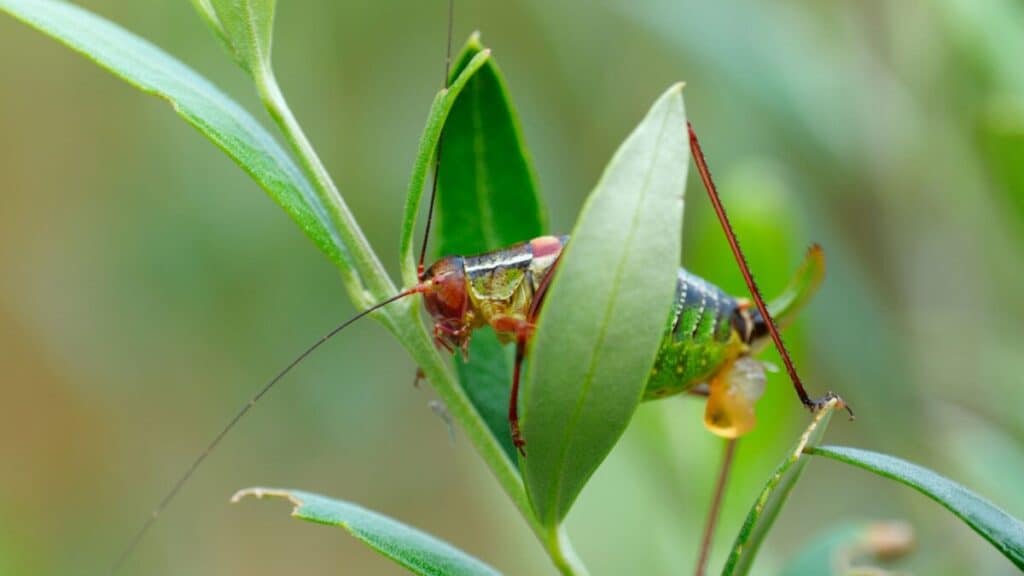
You should start by raking up your yard, making sure to cover areas where leaves tend to build up, such as around trees and in the corners of fenced-in areas.
Bag your leaves and dispose of them in accordance with your local trash pick-up service. Or take the bags to the dump.
If you have a leaf blower, use it after you’ve raked up the yard. Dead and decaying crickets will dry up once the leaves are raked up from over them and it will be much easier to move them with a leaf blower.
Getting Rid of Love Crickets
You may think you don’t have much control over crickets in your yard but you would be surprised at the effective measures you can take to ensure that your yard is as inhospitable to crickets as possible.

- Gid rid of or seal off all outside garbage
- Make sure your water hoses are coiled up and not leaking
- Change your outside lights to yellow, red, or orange
- Keep your yard mowed, neat, trim, and clear of any leaf piles
- Store firewood well away from your house
- Treat the yard with diatomaceous earth
Crickets are just like most other vermin in that they target areas that are comfortable, protective, and abundant with resources. You take all of that away and you eliminate the attraction of your yard when the crickets come calling.
Your garbage and firewood (assuming you have piles of firewood) are your two priorities over everything else. Crickets love garbage and they love the security that a pile of firewood provides.
It may look weird to go with some red, orange, or urine-yellow lighting outside, but bugs are known for their attraction to UV and white/blue light, which pretty much defines just about every light source out there.

Replace your outside bulbs with red, orange, or yellow and it will drag down cricket’s affinity for your light source.
Crickets are always looking for a source of shelter. The longer you go without mowing your lawn or trimming the hedges, the more growth springs up, providing plenty of attractive cover spots for crickets to hide in.
Water sources should be removed as well. Most people have water hoses outside and if you have one, be sure to coil it up, off the ground, when not in use. Also, make sure it’s not leaking, especially when you aren’t actively using it.
Diatomaceous Earth

This is important to highlight simply because of how effective Diatomaceous Earth is, coupled with the fact that its completely non-toxic. Just don’t inhale the stuff.
It won’t poison you, but the tiny particles in Diatomaceous Earth are razor sharp and they could damage your lungs.
Diatomaceous Earth is basically a powder, which means you can’t really use a spreader to distribute it around the house.
Instead, use it to target the areas that crickets like to gather in. This includes moist areas, areas of heavy overgrowth, piles of firewood, the base of trees, and any standing structures in the yard.
Diatomaceous Earth works by effectively dehydrating insects. When they pass by, particles of Diatomaceous Earth attach to their exoskeletons.
As the cricket (or any bug for that matter) moves, the Earth cuts it up, opening its exoskeleton and allowing its inner fluids to spill out.
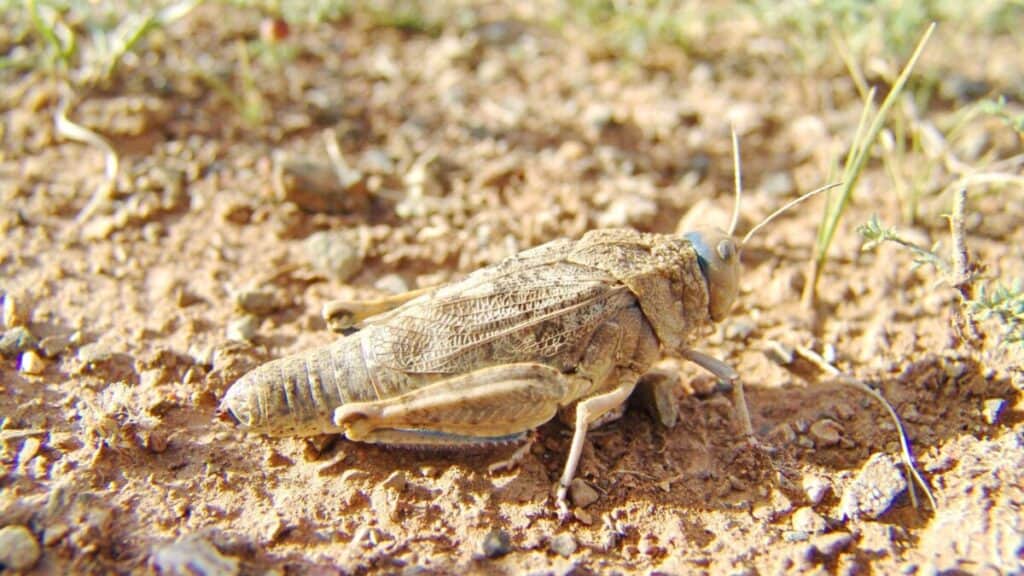
Though Diatomaceous earth won’t cut deeply enough to rupture their vital organs, the fluid loss immediately begins to dehydrate them.
If you have gone around, eliminating sources of water, the crickets will die since they can’t replace the fluids they’re losing. It’s a very effective, non-toxic pesticide that won’t harm you or your animals.
You can spread the stuff outside while your pets remain indoors. As soon as you are done spreading it, your pets can even consume the stuff without it causing any harm.
Though the particles are razor sharp, they are too small to affect larger mammals or human beings, so long as it is not inhaled.
All Things Considered
Dead crickets don’t attract live crickets but they do attract all sorts of unsavory critters and vermin. It’s always a good idea to try and remove dead crickets from the area.
If you have recently treated your yard or garden with pesticides, the odds are good that you will have some dead crickets around.
The best way to remove dead crickets is to not have any around in the first place. There are plenty of effective measures you can take to make your yard and home as inhospitable to crickets as possible.
Alright, that’s it for this article, here are a few hand-selected articles that you might also find interesting reads:
Are Crickets Attracted To Light? The Curious Answer.Are Crickets Harmful To Plants?
Cockroaches That Look Like Crickets – Easy To Miss
Recent Posts
Tiny Black Bugs in Bathroom NO WINGS: What They Are and What to Do!
Finding tiny black bugs in your bathroom can be uncomfortable, to say the least. Especially if they are persistent, or they appear in very large numbers, which they often like to do. When it...
Tiny Black Bugs in Plant Soil - What Are They & What To Do About It
A short horror story: You get a new houseplant. You do your best to take care of it. You’ve ensured that it has the right soil, the right amount of sun, it gets enough water. And then one day, you...

